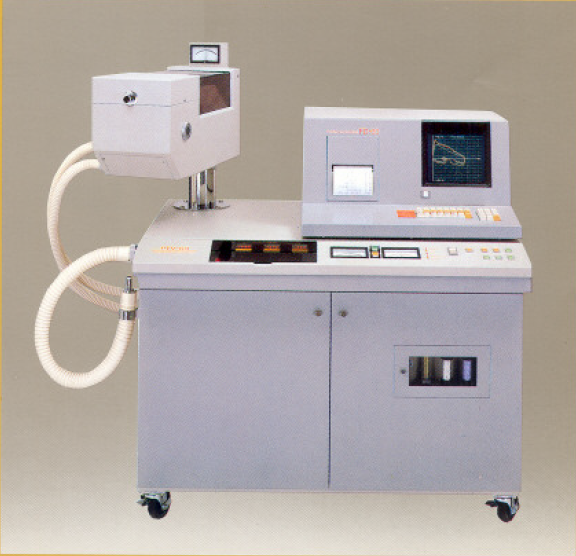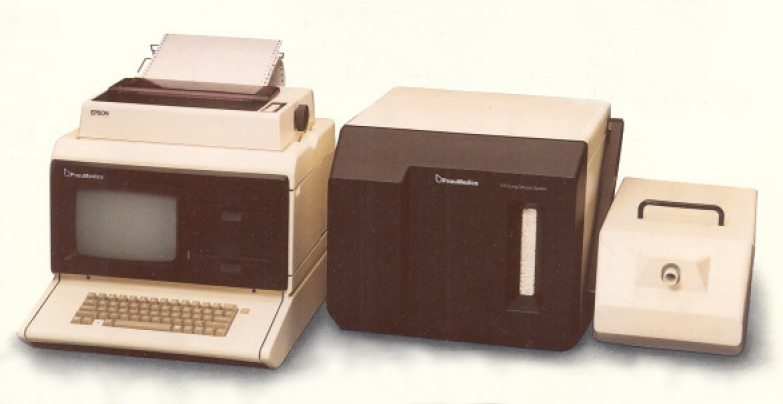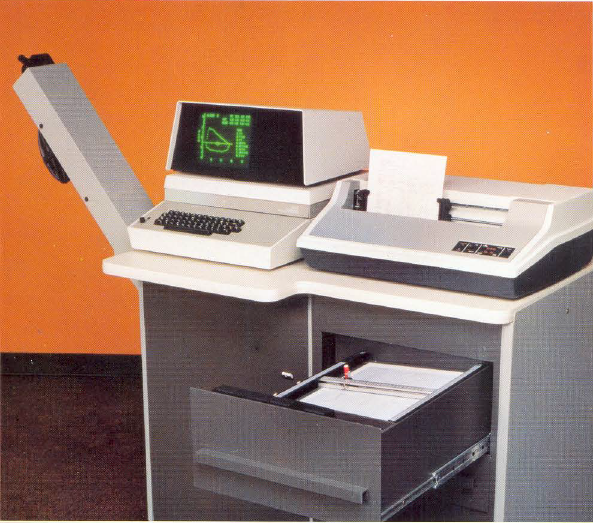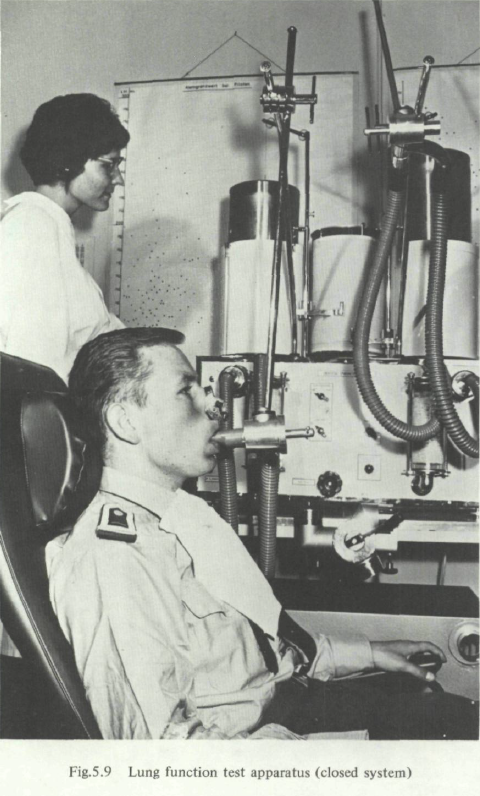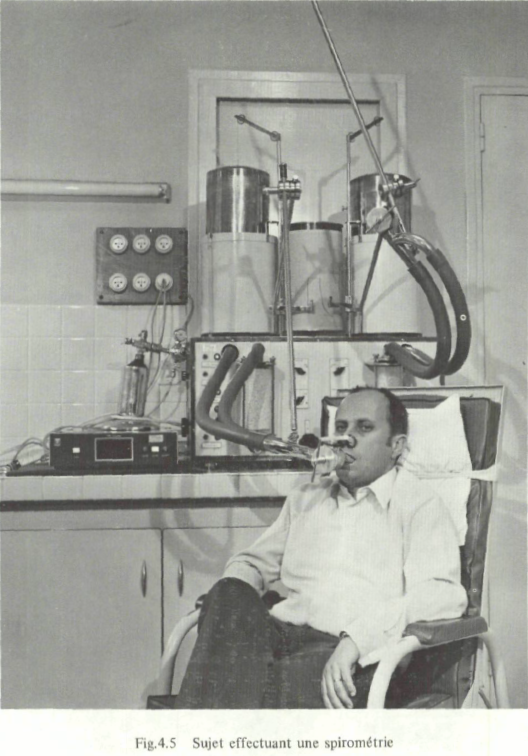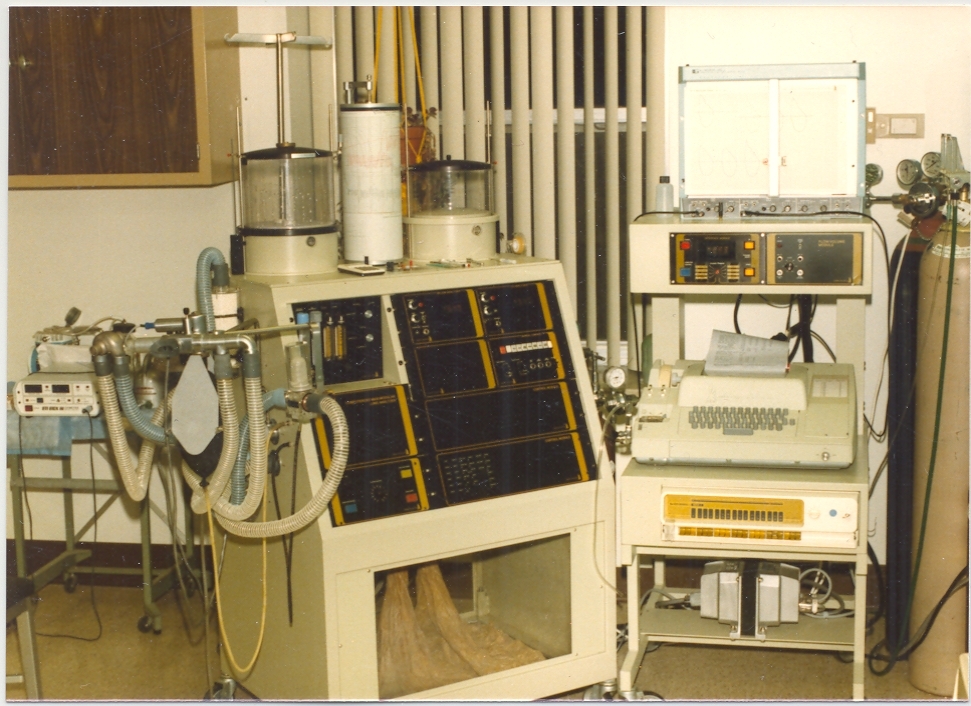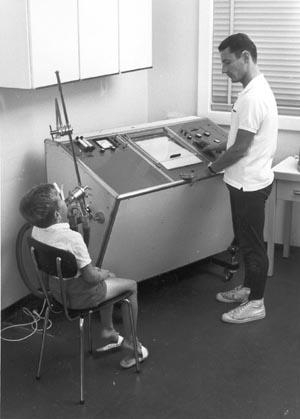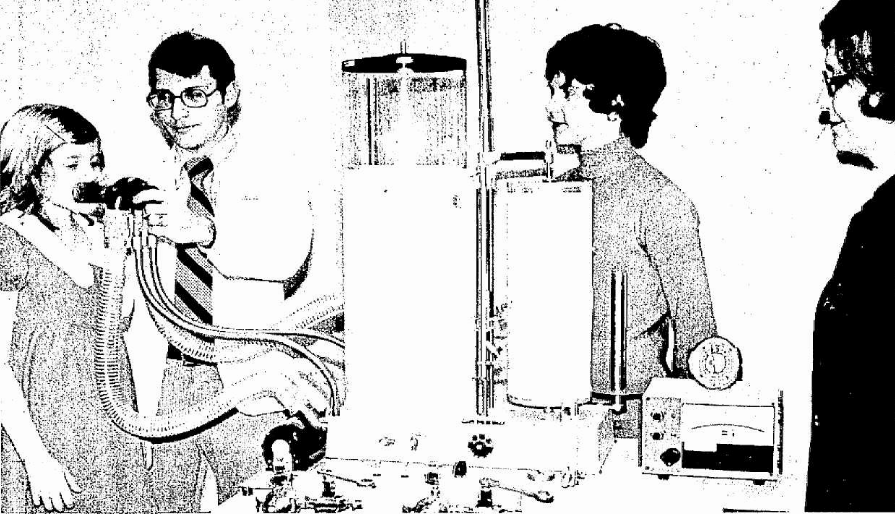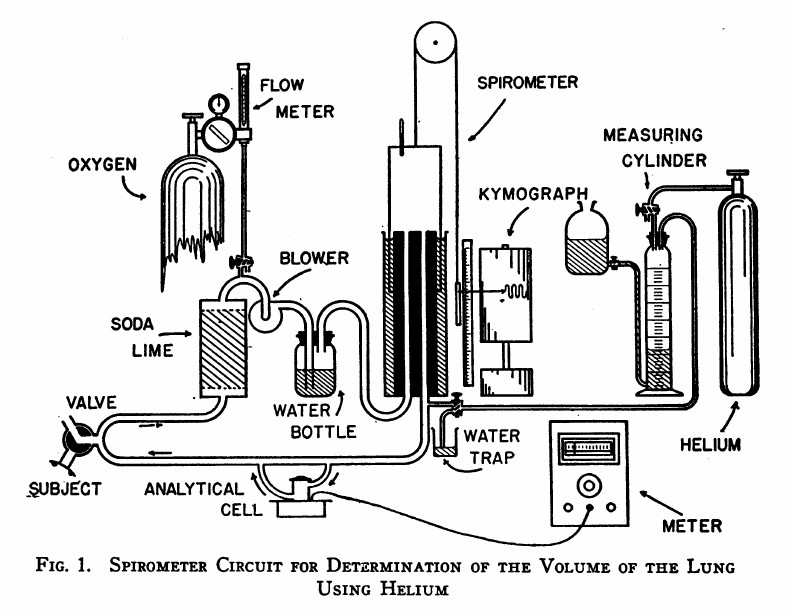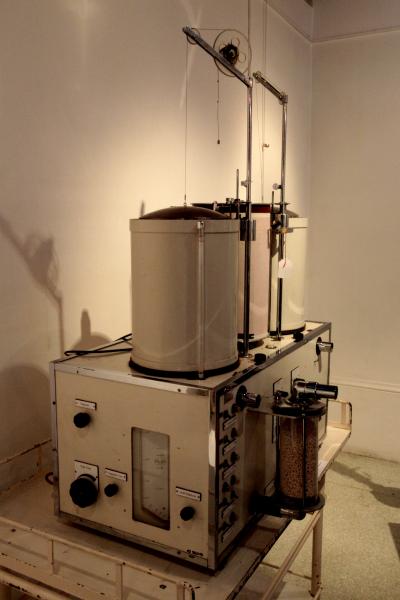It came with a 10″ color CRT in 6 different models. The basic unit was capable of performing spirometry, helium dilution lung volumes and single-breath DLCO. N2 washout lung volumes, closing volumes, steady-state DLCO and Viso-V (heliox spirometry) were options. Photo is from a sales brochure courtesy of James Sullivan, BA, RPFT, Supervisor, Pulmonary Laboratories, Memorial Sloan Kettering Cancer Center.
Category Archives: Helium Dilution FRC
Pneumedics Spirolyzer Pulmonary Testing System, 1984
Gould 5000 IV Pulmonary Testing System, 1983
The Gould 5000 IV was capable of performing spirometry, single-breath DLCO, closing volumes and either helium dilution or nitrogen washout lung volumes. It came with a “large 9″ CRT for real-time graphics”. Photo from a sales brochure courtesy of James Sullivan, BA, RPFT, Supervisor, Pulmonary Laboratories, Memorial Sloan Kettering Cancer Center
Godart Pulmotest, 1974, Helium Dilution Lung Volume testing
Godart Pulmotest, 1974, Helium Dilution Lung Volume testing
Collins Maxi-Modular System, Late 1970’s
Photograph courtesy of James Sullivan, BA, RPFT, Supervisor, Pulmonary Laboratories, Memorial Sloan-Kettering Cancer Center was taken in 1984.
His description: “This system did both ssDLCO and sbDLCO. It has an N2 analyzer, but this wasn’t working when I started in the lab; we used He equilibration for FRC measurement. It used a teletype for data input and output (those things put out a lot of heat…), a Data General computer, complete with the front-panel DIP switches, and a HP X-Y recorder. ….. It was a good system to learn on, because while it was “computerized”, you could still write down He readings and perform your own calculations. The spirometry software (all programs were loaded into the computer through the teletype via a perforated paper tape; loading took about 45 min) was pretty limited, and there were many times I could get more accurate measurements by calculating the tracings off of the kymograph.”
“…the second spirometer bell (on the right) was used for the inspired sbDLCO gas. The bell on the left was the primary spirometer, where spirometry, He equilibration and the volume measurements for both DLCO tests were done.”
Spirometry, Mijnhardt Spirometer, Late 1960’s
Found at Zeepreventorium.org. Described as a Mijnhardt spirometer from the late 1960’s. Given the gauges and columns at a guess this system probably performed helium dilution FRC tests as well as spirometry.
Lung Volumes, 1974, Collins
Helium Dilution Lung Volumes, 1949
From: Meneely GR, Kaltreider NL. The volume of the lung determined by helium dilution. Description of the method and comparison with other methords. Journal of Clinical Investigaton, 1949 28(1): 129-139, page 130.
“The spirometer circuit is diagrammed in Figure 1. The seven-liter cylindrical spirometer with obliterated internal dead space write the respiratory tracing on a kymograph drum. The volume of the spirometer may be read from the scale and pointer and, by transfer, from the respiratory tracing itself. The subject is connected to the circuit through a rubber mouthpiece on a three-way valve. The expired air passes vertically through a soda-lime canister for the most efficient absorption of carbon dioxide. Oxygen may be added at any desired rate through the diaphragm type flow control and meter on a tank of “medical” oxygen. A blower impels the expired air through the water bottle which contains many glass bead to break up the bubbles, and prevent disagreeable bumping due to large bubbles. Provision is made for the introduction of helium at the spirometer outlet. Part of the return flow shunts through the analytical cell and returns via the cell outlet to rejoin the return stream. The pressure differences in different segments of the circuit are small: slight negative pressure obtains between the soda-lime and blower, and positive pressure elsewhere. The soda-lime and the water bottle isolate the the blower to a degree, preventing vibration of the air column at the mouthpiece.”
Spirometer, Godart Pulmotest, circa 1975
Pulmonary Function testing system consisting of dual water-seal spirometers with a central kymograph. Performed spirometry, helium dilution FRC and DLCO. The purpose of the double spirometers is unclear but they may have been used to measure oxygen consumption. From: http://db.aconit.org
